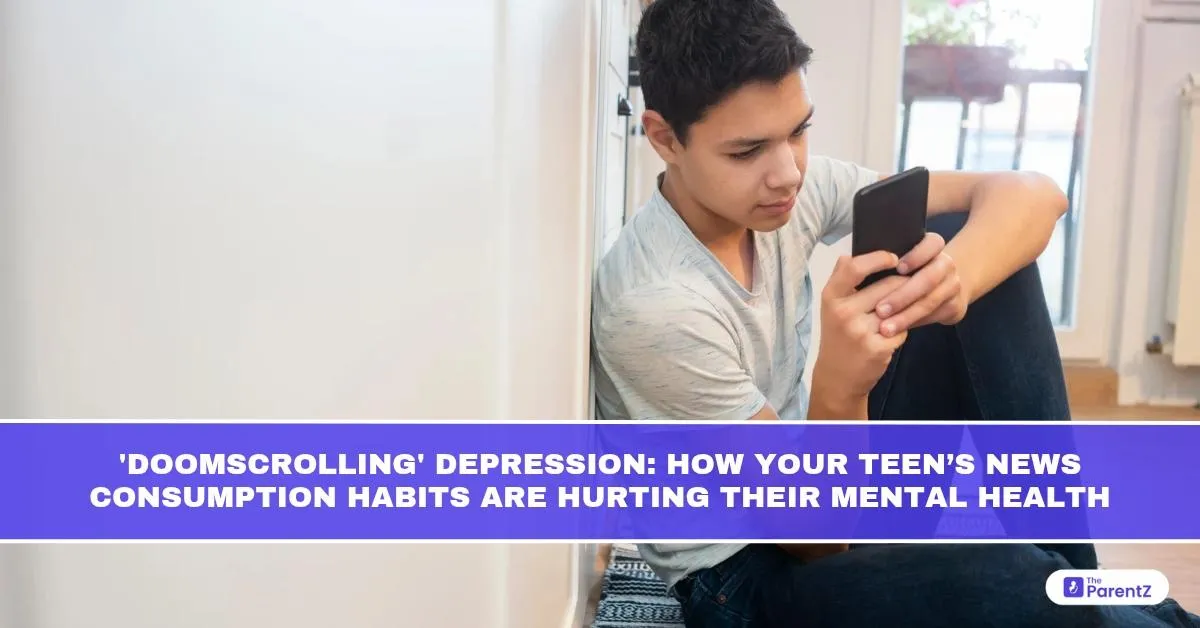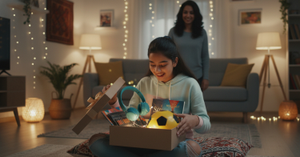The screen lights up again: earthquake, war, economic crisis, climate anxiety, celebrity death. Your teen doesn’t blink. They scroll. Scroll again. Then again. What starts as “staying informed” quickly turns into an endless loop of consuming bad news, absorbing distressing visuals, and silently spiraling. This behavior now has a name: Doomscrolling.
In today’s hyper-connected world, teens are increasingly caught in the cycle of doomscrolling, a compulsive habit of reading negative news online for long periods, often before bed. And this isn’t just a phase. It’s affecting their mental health in real, measurable ways.
What is Doomscrolling?
Doomscrolling is the act of endlessly scrolling through distressing, negative, or fear-inducing content, often related to global or local crises, without being able to stop.
For teens, who are already navigating hormonal changes, identity formation, peer pressure, and academic stress, this digital habit becomes emotionally overwhelming.
Unlike casual browsing, doomscrolling is:
- Driven by anxiety
- Feels involuntary
- Leaves the user feeling helpless or depressed
- Often occurs late at night or during emotional lows
Why Teens Are Especially Vulnerable
Adolescence is a time when the brain is undergoing major development—especially in areas linked to emotional regulation, impulse control, and social perception. When a teen consumes a stream of:
- War images
- Climate doom predictions
- Suicide headlines
- Violent or abusive content
- Economic fears
- Peer-related bullying or negative trends
It doesn’t just inform, it triggers and embeds fear, guilt, despair, or anger. And unlike adults, most teens do not have the psychological tools or emotional literacy to process these complex feelings in healthy ways.
Psychological Effects of Doomscrolling in Teens
- Increased Anxiety and Depression: Constant exposure to negative stimuli without emotional processing can cause low mood, hopelessness, and even anhedonia (loss of interest in things they used to enjoy).
- Sleep Disturbance: Most doomscrolling happens at night, leading to delayed sleep onset, reduced REM cycles, and disturbed circadian rhythms. Sleep deprivation worsens mood and memory.
- Fear of the Future (Eco-anxiety, War Anxiety, etc.): Teens may begin to feel what’s the point of studying or planning for life if the world is always on fire? This pessimism fuels procrastination, withdrawal, and apathy.
- Body Image and Social Comparison Stress: Negative news isn’t just global headlines; it’s also cyberbullying, unattainable beauty standards, and toxic peer culture. All of which are part of what teens now consume daily.
- Digital Dissociation: Prolonged doomscrolling can result in a trance-like state where the teen feels disconnected from reality, leading to emotional numbness or detachment.
How to Spot Doomscrolling in Your Teen
It doesn’t always look like “bad behavior”. In fact, many teens appear quiet, even responsible. But signs of doomscrolling include:
- Constant checking of news apps, Twitter/X, Instagram Reels
- Increased screen time, especially late at night
- Sudden irritability, emotional fatigue, or withdrawal
- Expressing hopelessness about the future
- Using headlines as a conversation starter to express despair or anger
- Declining sleep quality or insomnia
If your teen wakes up groggy, loses interest in hobbies, and constantly talks about the world being “doomed”, they may not just be moody. They may be mentally overwhelmed by information.
The Neurobiology Behind It
Doomscrolling activates the limbic system, the emotional brain, which then triggers the stress hormone cortisol. This keeps the brain in a heightened state of alert.
When done repeatedly, it rewires the brain’s reward system to expect stimulus from fear-based content, making it addictive. Neuroscience studies show that constant negative input lowers dopamine sensitivity, meaning the teen becomes numb to pleasure and stuck in low mood. This is closely linked with early-onset depression.
What the Research Says
- A 2020 study in Health Communication found that higher media exposure during crises (e.g., COVID-19) was directly linked to higher depression and stress scores in adolescents.
- According to a 2022 review published in Frontiers in Psychology, digital overexposure to traumatic events in news media can mimic PTSD symptoms in teens even if they aren’t directly involved.
- Indian studies (AIIMS, Delhi 2023) noted that urban adolescents had higher rates of sleep disorders, panic attacks, and emotional dysregulation correlated with excessive news consumption during late hours.
So, What Can Parents Do?
Not all screen time is bad. It’s not about banning news but helping teens develop a conscious relationship with digital information.
1. Talk About It Without Blame
Instead of saying “Stop scrolling,” ask,
“What have you been seeing lately online that’s making you feel heavy?”
This opens the door to emotional expression.
2. Create a Media-Healthy Home
- Set tech-free times (like 1 hour before bed)
- Introduce morning check-ins that include what they’re feeling, not just what they’re doing
- Follow 1:2 rule: For every 1 negative news story, encourage them to explore 2 positive or neutral content pieces (nature, humor, music)
3. Model Emotional Literacy
If you, as a parent, talk about your own reaction to distressing news (“That news made me sad, so I took a walk”), your child learns to process, not suppress.
4. Curate Their Feed Together
Sit with your teen and check which accounts they follow. Gently suggest muting or unfollowing toxic or fear-fueling pages. Introduce credible, calm sources like The Print, BBC Kids, or Positive News India.
5. Support Therapy if Needed
If the teen shows signs of deep depression, insomnia, or avoidance of life tasks, consider seeking help from a child psychologist or adolescent mental health specialist.
Therapy today often includes digital hygiene modules, cognitive reframing, and peer support, all of which are crucial for healing.
Final Reflection
We often say today’s teens are “too sensitive”, but sensitivity is not weakness; it’s unprocessed emotion. In a world where trauma is one scroll away, mental strength comes not from ignoring pain, but from learning how to hold it safely. Your teen doesn’t need protection from the truth. They need guidance on how to carry it without losing themselves in the process. By creating digital awareness at home, validating their fears, and promoting intentional media use, you offer your child not just peace but emotional resilience in a chaotic world.








Be the first one to comment on this story.